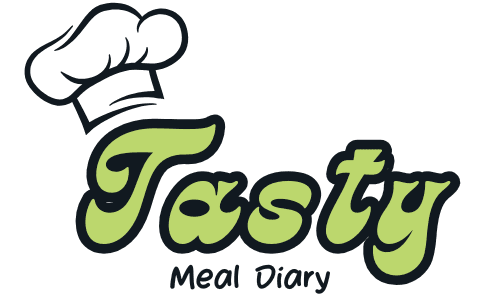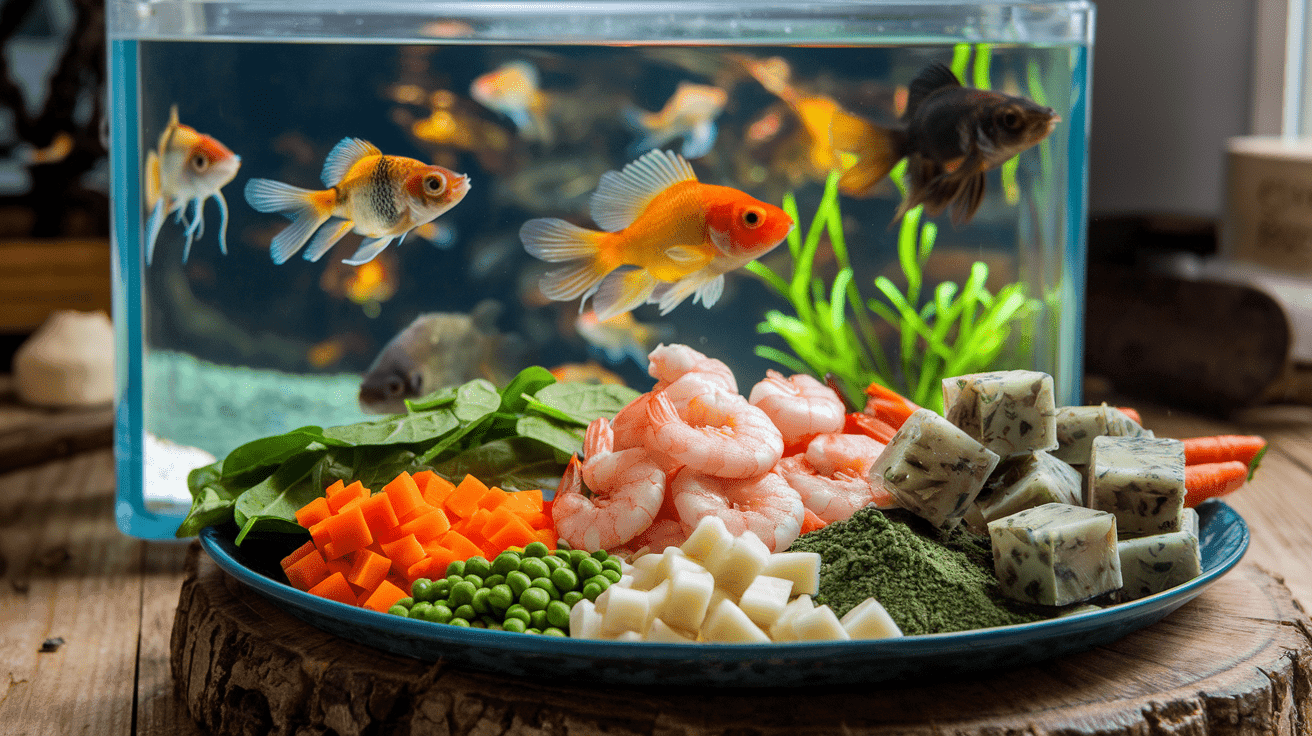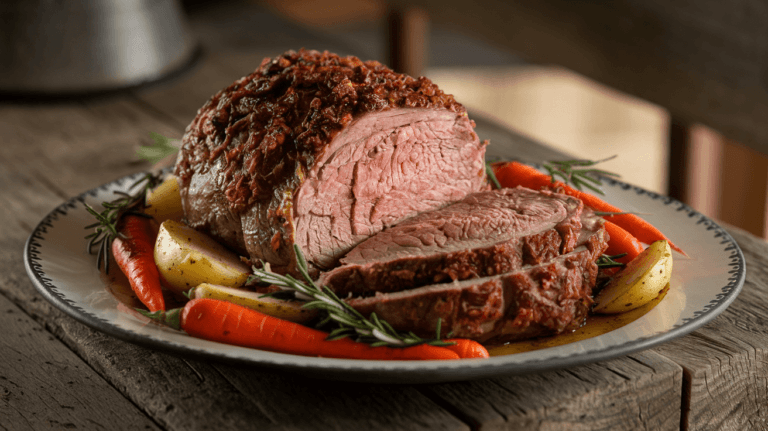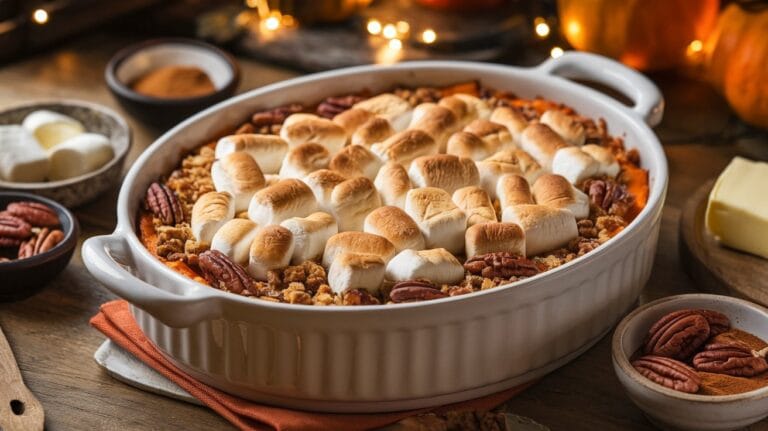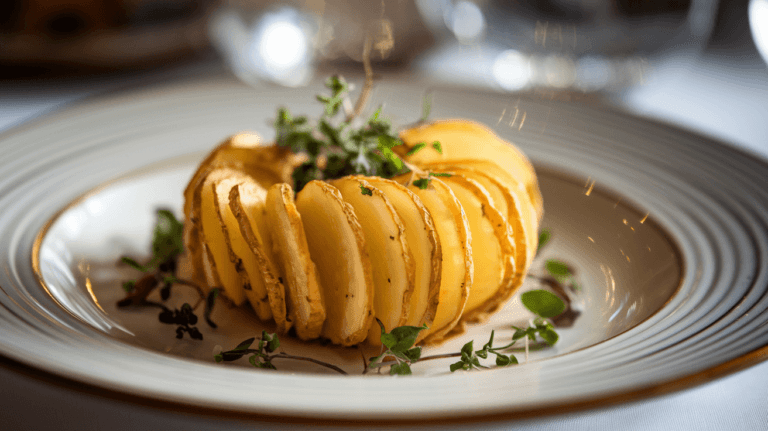Feeding your fish the right diet is crucial for their health, growth, and vibrant colors. While store-bought fish food is convenient, it often contains artificial preservatives and fillers that may not provide optimal nutrition. The good news? You can make your own fish food recipe at home using fresh, nutrient-rich ingredients tailored to your fish’s dietary needs.
Table of Contents
Why Make Your Own Fish Food?
Making homemade fish food may sound like a hassle, but it comes with a ton of benefits. First and foremost, you have complete control over the ingredients, ensuring your fish get a balanced and natural diet. Unlike commercial fish food, which often contains unnecessary additives, DIY fish food is free from harmful preservatives and artificial colors.
Another great advantage? It’s cost-effective! Buying high-quality fish food can be expensive, especially if you own multiple aquariums. By preparing your own, you’ll save money while providing a nutrient-dense diet for your fish. Plus, you can customize the recipe based on your fish species carnivores, herbivores, and omnivores all have different dietary needs.
Benefits of Homemade Fish Food Over Commercial Options
Not convinced yet? Here’s why DIY fish food is a game-changer:
- Better Nutrition: You can add high-quality proteins, vitamins, and essential minerals without unnecessary fillers.
- Fresh and Natural: No artificial preservatives, dyes, or low-quality fish meal.
- Customizable Diets: Whether your fish thrive on protein-rich fish food or a veggie-based diet, you can adjust the recipe accordingly.
- Improved Fish Health: A balanced diet enhances fish immunity, growth, and color vibrancy.
- Eco-Friendly: Reduces plastic packaging waste from store-bought fish food.
By switching to homemade fish food, you’re not only making a healthier choice for your aquatic pets but also contributing to a more sustainable hobby.
Ingredients for Fish Food Recipes
Animal-Based Ingredients: Fish, Shrimp, and Insects
Protein is a crucial part of any fish food recipe, especially for carnivorous and omnivorous species. In the wild, fish consume small insects, crustaceans, and even other fish, making animal-based ingredients an essential component of homemade fish food.
Here are some excellent protein sources:
- Fresh or Frozen Fish – Salmon, tilapia, and whitefish are great options.
- Shrimp and Krill – Packed with Omega-3 fatty acids that enhance fish coloration.
- Bloodworms and Daphnia – Ideal for tropical fish and fry.
- Mealworms and Black Soldier Fly Larvae – Excellent protein sources for larger fish.
By incorporating these into your DIY fish food, you’ll provide high-quality protein that supports healthy growth and vibrant colors.
Plant-Based Ingredients: Vegetables and Algae
Many fish species thrive on a diet rich in vegetables and algae. Herbivorous fish, such as goldfish and plecos, need plenty of plant matter to stay healthy.
Consider adding these nutrient-rich veggies:
- Spinach and Kale – High in vitamins A, C, and K.
- Carrots and Bell Peppers – Promote bright coloration in fish.
- Zucchini and Cucumber – Easily digestible and great for algae eaters.
- Spirulina and Nori – Superfoods loaded with essential nutrients.
Essential Vitamins and Minerals for Fish Health
A balanced diet isn’t just about protein and veggies. Fish require vitamins and minerals to boost immunity and prevent deficiencies.
Key supplements to include in homemade fish food are:
- Vitamin C and E – Strengthens immunity and protects cells.
- Calcium and Magnesium – Supports bone development and muscle function.
- Brewer’s Yeast – Enhances digestion and nutrient absorption.
With these essential ingredients, your fish will receive a balanced, natural diet that supports their overall well-being.
Best DIY Fish Food Recipes
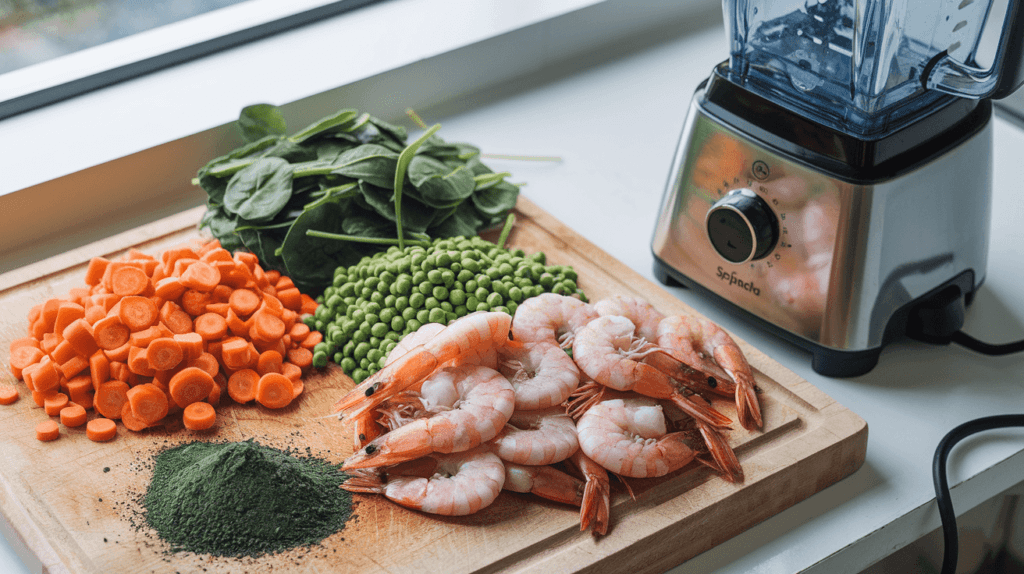
Recipe 1: Protein-Rich Fish Food with Shrimp and Krill
This fish food recipe is perfect for carnivorous and omnivorous fish. It’s packed with high-quality proteins and essential fats.
Ingredients:
- 1 cup shrimp (peeled and cooked)
- ½ cup krill or bloodworms
- 1 small fish fillet (salmon or tilapia)
- 1 tsp spirulina powder
- ½ cup unflavored gelatin
- ½ cup RO/DI water
Instructions:
- Blend shrimp, krill, and fish fillet into a fine paste.
- Dissolve gelatin in warm water and mix with the blended ingredients.
- Pour into an ice cube tray and freeze for easy portioning.
This recipe is ideal for bettas, cichlids, and marine fish that require a high-protein diet.
Recipe 2: Spirulina and Vegetable Blend for Herbivorous Fish
If you own herbivorous fish like goldfish, plecos, or mollies, this plant-based recipe is a fantastic choice.
Ingredients:
- ½ cup spinach
- ½ cup zucchini (peeled)
- 1 tsp spirulina powder
- ¼ cup carrots (blanched)
- ½ cup gelatin
Instructions:
- Blend all the vegetables into a smooth paste.
- Dissolve gelatin in warm water and mix with the blended veggies.
- Freeze the mixture in small portions for easy feeding.
Recipe 3: Gel Fish Food Recipe for Tropical Fish
This versatile homemade fish food recipe works for both omnivores and herbivores. The gel texture mimics natural food consistency, making it more appealing to fish.
Ingredients:
- ½ cup fish fillet
- ½ cup mixed vegetables (carrots, peas, and spinach)
- 1 tbsp spirulina powder
- ½ cup unflavored gelatin
- 1 tsp fish vitamins
Instructions:
- Steam the vegetables and blend with fish fillet and spirulina powder.
- Mix in fish vitamins and dissolved gelatin.
- Pour into a mold, refrigerate, and cut into small cubes for feeding.
Recipe 4: Simple Homemade Fish Flakes Using Dehydration
If you prefer dry fish food, making your own flakes is easy!
Ingredients:
- ½ cup lean fish (tilapia or cod)
- ¼ cup carrots and spinach
- 1 tsp spirulina
- 1 tbsp brewer’s yeast
Instructions:
- Blend all ingredients into a paste.
- Spread the mixture thinly on a baking sheet.
- Dehydrate in the oven at the lowest setting until completely dry.
- Break into small flakes and store in an airtight container.
Recipe 5: Frozen DIY Fish Food Cubes for Easy Feeding
For a mess-free feeding experience, frozen food cubes are a great option.
Ingredients:
- ½ cup fish fillet
- ½ cup mixed seafood (shrimp, squid, mussels)
- ½ cup vegetables
- ½ cup gelatin
Instructions:
- Blend all ingredients into a fine paste.
- Mix with dissolved gelatin and pour into an ice cube tray.
- Freeze and use one cube per feeding.
This recipe provides a balanced mix of protein and vegetables, making it suitable for a wide range of fish species.
Step-by-Step Guide to Preparing Homemade Fish Food
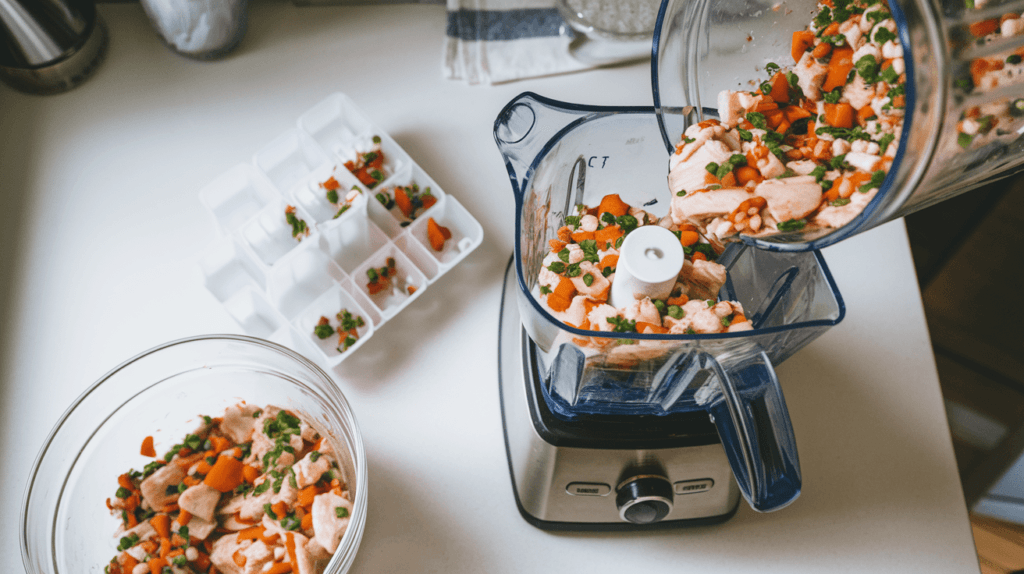
Blending and Mixing the Ingredients
Making homemade fish food is easier than you think! Start by selecting high-quality ingredients based on your fish’s diet. Carnivores thrive on proteins like shrimp, mussels, and fish fillets, while herbivores prefer a mix of vegetables, spirulina, and algae.
Here’s a simple way to prepare a nutritious fish food recipe:
- Chop and blend proteins – If using shrimp, fish, or other seafood, finely chop them before blending.
- Add vegetables – Include blanched spinach, carrots, peas, or bell peppers for vitamins and minerals.
- Mix in essential nutrients – Spirulina powder, fish vitamins, and calcium supplements help enhance fish health.
- Blend with water – Use a small amount of RO/DI water to create a smooth paste.
A well-mixed batch ensures your fish get a balanced, easy-to-digest diet!
Cooking and Preserving the Fish Food
Once blended, you can prepare your DIY fish food in different ways:
- Gel-based fish food – Add unflavored gelatin to the mixture, heat until it dissolves, then pour into molds. Once set, refrigerate for easy feeding.
- Dehydrated fish flakes – Spread the blended mixture onto a baking sheet and dry it in a low-temperature oven (around 150°F) for several hours. Once crisp, break into flakes.
- Frozen fish food cubes – Pour the mixture into an ice cube tray and freeze. This method works well for larger fish that need whole chunks of food.
Each method helps preserve nutrients and allows for convenient feeding.
Proper Storage Methods to Maintain Freshness
To keep your homemade fish food fresh and safe:
- Store gel food in the fridge for up to two weeks.
- Keep frozen cubes in an airtight container for up to six months.
- Store dried flakes in a cool, dry place for up to three months.
Always check for signs of spoilage before feeding bad food can harm your fish’s health.
Common Mistakes to Avoid When Making Fish Food
Using the Wrong Ingredients: What to Avoid
Making homemade fish food is great, but not all ingredients are safe for fish. Some foods can be harmful or difficult for them to digest. Here’s what to avoid:
- Processed foods – Avoid bread, crackers, and pasta, which contain additives that aren’t suitable for fish.
- Fatty meats – Fish struggle to digest animal fats like beef or pork. Stick to lean seafood.
- Onions and garlic in excess – While a small amount of garlic can boost immunity, too much can be toxic.
- Overuse of grains – Oats or rice in small amounts are okay, but too many carbohydrates can lead to bloating.
By choosing high-quality, natural ingredients, you’ll provide your fish with the best nutrition possible.
Improper Storage That Leads to Spoilage
Even the best DIY fish food won’t be useful if it spoils quickly. Follow these storage tips to keep it fresh:
- Label and date your fish food to track freshness.
- Freeze homemade fish food in small portions to prevent waste.
- Check for mold or bad smells before feeding.
If stored correctly, your fish food recipe can last for months, ensuring a consistent, healthy diet for your fish.
FAQs
What is the best homemade fish food for goldfish?
Goldfish are omnivores, so they need a mix of proteins and vegetables. A great homemade fish food for goldfish includes boiled peas, spinach, and a small amount of shrimp or fish. Gel food recipes work well for them since goldfish enjoy soft foods.
Can I use human food ingredients for my fish?
Yes, but only natural, unprocessed foods. Fresh vegetables like zucchini, carrots, and leafy greens are excellent for herbivorous fish. Small amounts of lean seafood, like shrimp or white fish, are ideal for carnivorous species. Avoid anything with preservatives, salt, or artificial flavors.
How long can homemade fish food be stored?
Storage time depends on the type of food:
- Frozen fish food cubes – Up to 6 months.
- Gel-based fish food – Around 2 weeks in the fridge.
- Dehydrated flakes – Up to 3 months in a cool, dry place.
Is homemade fish food suitable for all fish types?
Yes! The key is adjusting the recipe based on your fish species. Carnivorous fish need protein-rich ingredients, while herbivores thrive on plants and algae. Mixing the right nutrients ensures all fish get a balanced diet.
If you’re looking for more tasty recipes, check out our collection of delicious meal ideas!
